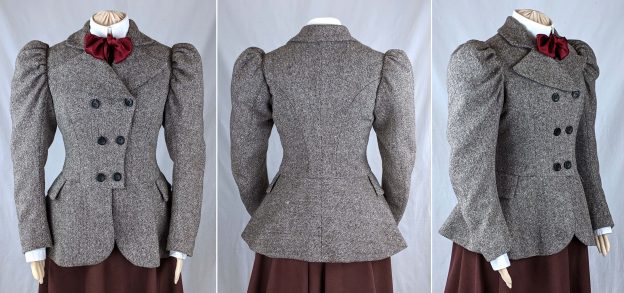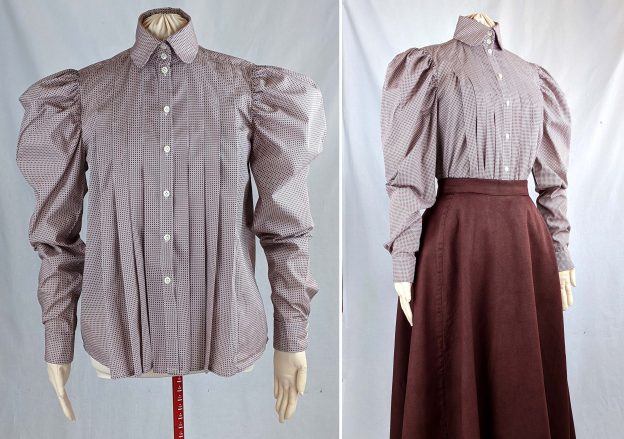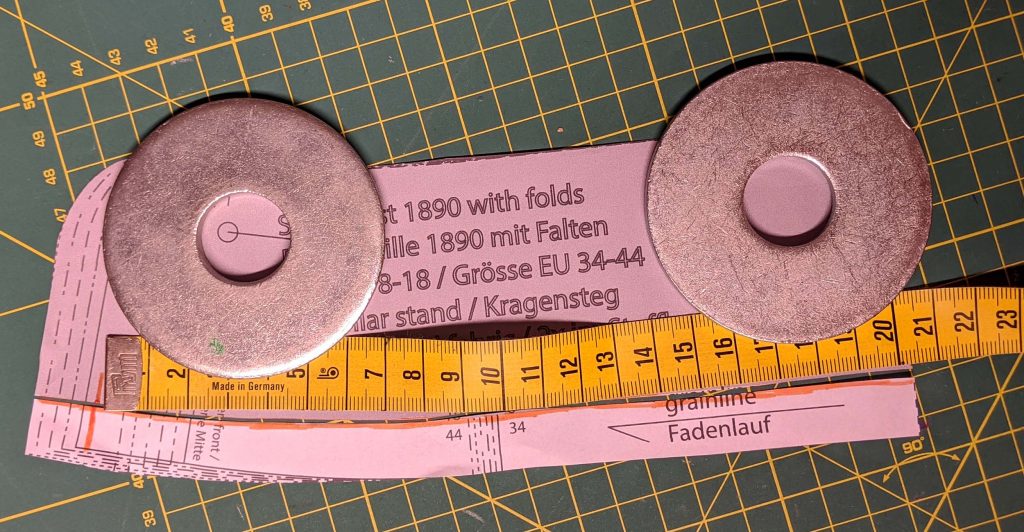It´s time to get finished! Just the sleeves and some details are missing. I decided to take the smaller lining sleeves, still enough pouf for my purposes. This is the canvas for the sleeve hem, cut on the bias and shaped into a slight curve with the iron.
After sewing the back sleeve seam, line up the canvas with the hemline and baste in place, and catch stitch to the seam allowances. Sew the front sleeve seam while folding the canvas to the side. Press open the seam allowances and smooth out the canvas over the seam, and catch stitch in place. Turn in the hem allowance and catch stitch to the canvas.
Continue reading
















